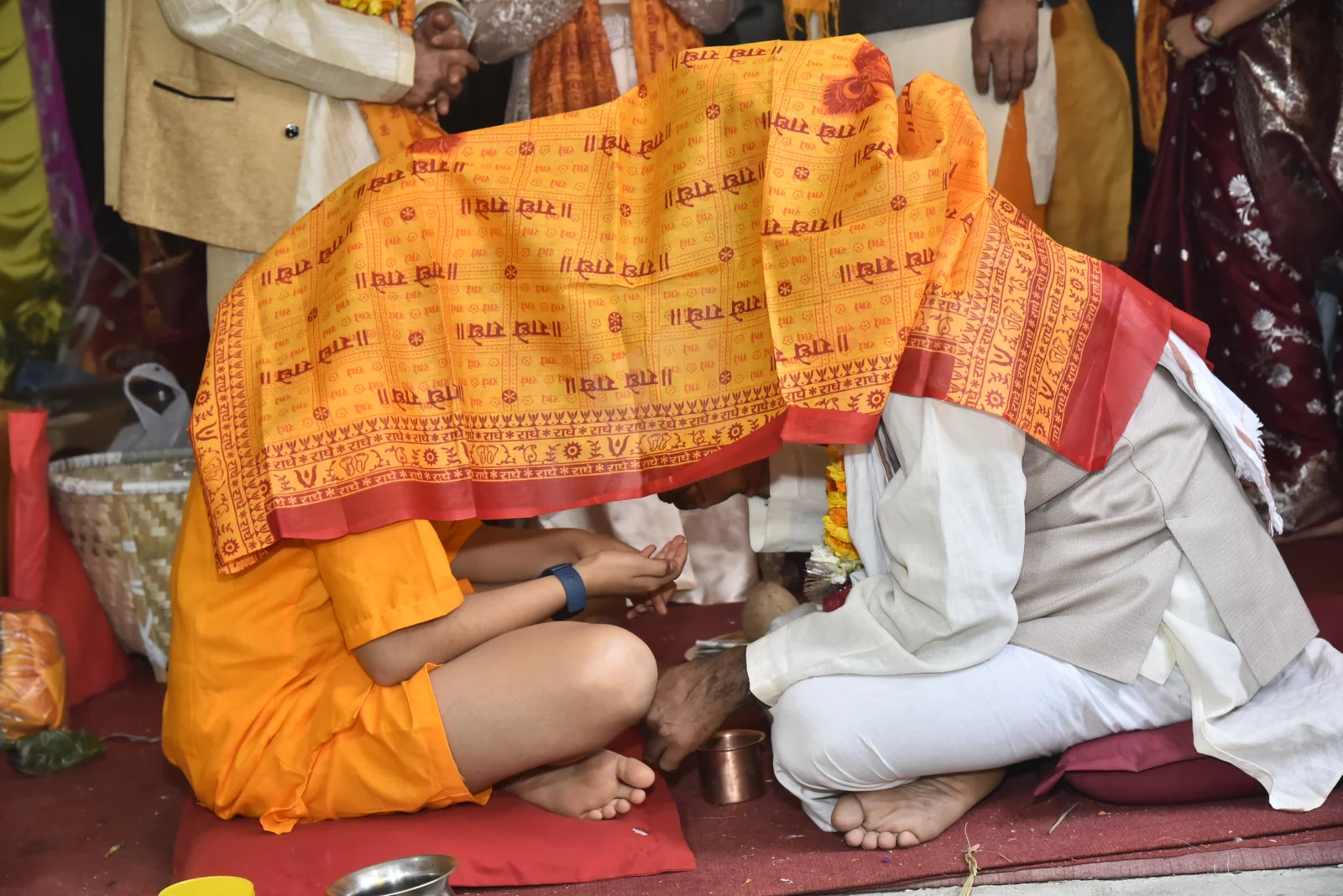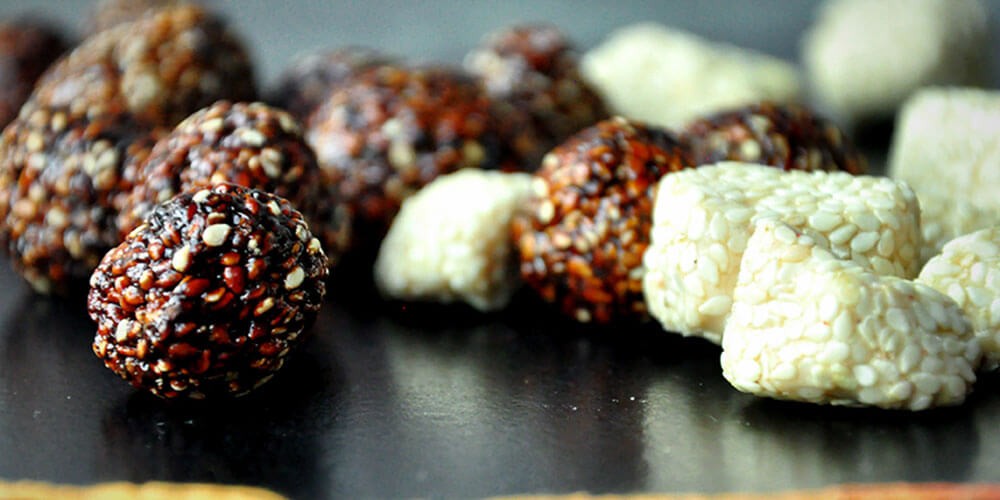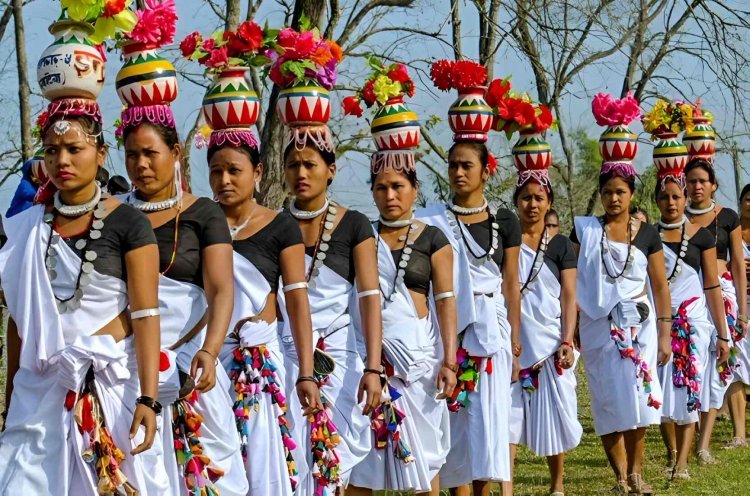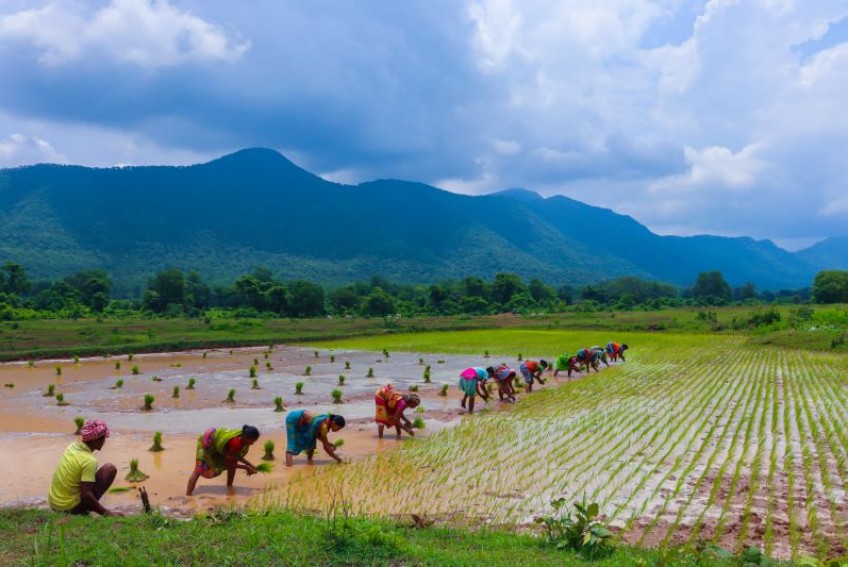Share this Article
Introduction
Maghe Sankranti, also widely known as Makar Sankranti, is one of the most important seasonal and cultural festivals in Nepal. Falling in mid-January, it marks the transition of the sun into the zodiac sign Capricorn (Makar Rashi), a celestial event that symbolizes the end of the harsh winter solstice and the arrival of longer, warmer days. While this astronomical shift is a universal phenomenon observed across South Asia, in Nepal it has been woven into a unique cultural fabric that combines food, faith, and family togetherness.
The word Sankranti itself means “transition,” reflecting the movement of the sun from one zodiac house to another. The entry into Makar Rashi is considered particularly auspicious because it ushers in a period of growth, renewal, and agricultural promise. In Nepali households, Maghe Sankranti is not simply an astronomical date but a celebration that embraces spirituality, culinary traditions, and kinship bonds.
The festival is celebrated with much enthusiasm across all parts of Nepal, though the customs vary among different communities and regions. At its heart, however, Maghe Sankranti carries a shared essence: it is a day of purity, nourishment, gratitude, and social harmony. Families gather to prepare special foods such as sesame seed sweets, molasses, and root vegetables; devotees bathe in sacred rivers believing in their cleansing powers; and communities unite in fairs and gatherings that highlight the collective spirit of Nepali culture.
In exploring Maghe Sankranti, we uncover layers of meaning that transcend time. It is not only a marker of seasonal change but also a reminder of the interdependence between humans, nature, and spirituality. To truly understand this festival, one must look at its historical roots, religious practices, food traditions, family values, and its evolving role in modern Nepali society.
Historical Origins of Maghe Sankranti
Ancient Hindu Scriptures and References to Sankranti
The celebration of Sankranti has deep roots in Hindu cosmology and texts. Ancient scriptures like the Rig Veda and Mahabharata reference the importance of solar transitions, especially the sun’s movement into Makar Rashi. These moments were seen as turning points in the cosmic cycle, influencing not only the environment but also human destiny. The alignment of planetary bodies during this period was thought to enhance spiritual energy, making rituals performed at this time especially fruitful.
The Puranas also mention Sankranti as a goddess who defeats darkness and evil, paving the way for light and positivity. This symbolic battle is reflected in the timing of Maghe Sankranti, which follows the longest night of the year and celebrates the return of longer days.
Association with the Mahabharata and Bhishma Pitamah
One of the most significant mythological connections comes from the Mahabharata. Bhishma Pitamah, a revered elder of the Kuru dynasty, is said to have chosen to leave his mortal body during Uttarayan—the period beginning with Maghe Sankranti when the sun starts its northward journey. His decision reflects the belief that passing away during this time leads to liberation (moksha). This narrative has deeply influenced Hindu traditions, where Maghe Sankranti is viewed as a spiritually charged moment that opens doors to divine blessings.
Solar Transition into Makar Rashi (Capricorn)
From an astronomical perspective, Maghe Sankranti marks the sun’s transition into Makar Rashi (Capricorn). In the Nepali context, this is celebrated as the beginning of a more favorable season. Farmers associate it with the gradual shift toward spring and the preparation of fields for upcoming harvests. The alignment is not only a cosmic phenomenon but also a practical marker for agricultural cycles, making it vital to rural life.
Regional Legends and Local Myths in Nepal
Beyond pan-Hindu beliefs, local myths enrich the meaning of Maghe Sankranti in Nepal. In many villages, elders tell stories of deities blessing humans with warmth and food during the coldest time of the year. In some regions, it is said that consuming tarul (yam) and chaku (molasses) originated from divine instructions given to protect people from illness during winter. These myths reinforce cultural practices, embedding them with layers of both faith and pragmatism.
Religious and Spiritual Significance
The Worship of the Sun God Surya
At the heart of Maghe Sankranti lies the reverence for the sun, personified in Hindu tradition as Surya Dev. The sun is considered the ultimate source of energy, light, and life. In Nepal, devotees rise before dawn on Maghe Sankranti and head toward rivers to take a ritual bath, offering water and prayers to the rising sun. This practice is not merely symbolic—it reflects gratitude for the life-sustaining power of sunlight, which becomes even more meaningful as the long winter nights give way to longer days.
The worship of Surya during Maghe Sankranti also connects to agricultural cycles. Farmers recognize that the sun’s northward journey (Uttarayan) signals a gradual increase in warmth, crucial for the fertility of the land. Thus, honoring Surya is both a spiritual and practical act, acknowledging his role in sustaining crops, livestock, and human health.
Belief in the Cleansing Power of Holy Rivers
Maghe Sankranti is one of the few festivals where ritual bathing in rivers is the central act of devotion. From the Bagmati in Kathmandu to the Narayani in Chitwan, and from the Kali Gandaki in the west to the Kankai in the east, thousands of devotees gather at riverbanks before sunrise. The belief is that immersing oneself in these sacred waters purifies the body and the soul, washing away accumulated sins and negativity.
Pilgrimage sites such as Devghat, where the Gandaki and Narayani rivers meet, become especially crowded during Maghe Sankranti. The confluence of rivers is considered a tirtha—a holy crossing point between the physical and spiritual worlds. People believe that bathing here on this day ensures blessings not only for themselves but also for their ancestors, helping their souls attain peace.
The Practice of Ritual Bathing at Dawn
The act of bathing at dawn during mid-January is not an easy one, especially in Nepal’s freezing winter mornings. Yet, devotees endure the cold with unwavering faith. The chill of the water is interpreted as a test of devotion and purity. Emerging from the river after a ritual bath, wrapped in clean clothes and filled with spiritual resolve, is seen as beginning the year with a fresh start.
Some communities also combine bathing with fasting or partial fasting, reinforcing the idea of discipline and cleansing. The body is purified externally through water and internally through controlled consumption, making the individual spiritually attuned for prayers and rituals performed afterward.
Spiritual Importance of Charity and Giving During Maghe Sankranti
Maghe Sankranti is also a festival of daan (charity). Ancient Hindu belief emphasizes that giving during auspicious times multiplies spiritual merit. On this day, many people donate food, grains, clothes, or money to the poor and to temples. Sesame seeds, being central to the festival, are often given as offerings, symbolizing prosperity and health.
In rural areas, wealthier households prepare extra food to share with neighbors and visitors. This act of generosity reinforces community harmony, ensuring that no one is left out of the celebration. In modern urban centers, individuals may donate to social organizations or distribute blankets to those in need, adapting the spirit of daan to contemporary settings.
Connection to Cosmic Energy and Auspicious Timing
Astrologically, Maghe Sankranti marks the sun’s northward movement, which is believed to be a period when cosmic energy is especially abundant. This is why major religious rituals, marriages, and spiritual initiations are often planned after this date. The day is considered free from the influence of negative planetary alignments, making it one of the most auspicious times in the Hindu calendar.
For many devotees, participating in rituals on Maghe Sankranti is not just about following tradition—it is about aligning oneself with the universe’s positive energy. The idea is that when humans live in harmony with cosmic rhythms, they invite prosperity, health, and peace into their lives.
The Festival and the Nepali Calendar
The Positioning of Maghe Sankranti in the Bikram Sambat Calendar
In Nepal, the traditional calendar followed is the Bikram Sambat (BS), which is about 56 years ahead of the Gregorian calendar. Maghe Sankranti falls on the first day of the month of Magh, which corresponds to mid-January in the English calendar. Unlike other festivals that shift dates every year due to lunar calculations, Maghe Sankranti is fixed in mid-January because it is based on the solar cycle.
This consistency makes it one of the most predictable festivals in the Nepali calendar. Every household knows that as the month of Poush comes to an end, preparations for Maghe Sankranti must begin. The alignment of the solar transition with the Nepali calendar reinforces its importance, serving as a marker for both spiritual rituals and seasonal activities.
Comparison with Makar Sankranti in India
While Nepal celebrates Maghe Sankranti, India celebrates Makar Sankranti on the same day. The festivals share many similarities—both mark the sun’s entry into Capricorn, both emphasize river bathing, and both celebrate foods like sesame and jaggery. However, regional variations give each celebration a distinct flavor.
In India, Makar Sankranti is associated with kite flying in Gujarat and Maharashtra, while in South India it coincides with Pongal, a harvest festival. In Punjab, it aligns with Lohri, which involves bonfires and folk dances. Nepal, however, gives greater emphasis to ritual bathing and the consumption of specific foods such as tarul (yam) and chaku.
The shared roots but diverse expressions highlight the interconnectedness of South Asian cultures, where astronomical transitions are celebrated with regional creativity.
The Festival as a Marker of Harvest and Seasonal Transition
Maghe Sankranti coincides with a crucial point in the agricultural calendar. In many parts of Nepal, the winter harvest has been completed by mid-January, and the fields are prepared for spring crops. The festival thus becomes a time of rest, gratitude, and preparation. Farmers take this opportunity to celebrate the fruits of their labor and pray for favorable conditions in the coming months.
Seasonally, Maghe Sankranti marks the end of the coldest stretch of winter. While temperatures may remain low, the days begin to grow longer, signaling hope and renewal. For households, it is a reminder to adjust their lifestyles—consuming warming foods, strengthening community ties, and preparing for the gradual shift toward spring.
The Significance of the Winter Solstice and Longer Days Ahead
Astronomically, Maghe Sankranti is closely linked to the winter solstice, the longest night of the year. Though the solstice occurs slightly earlier in December, Maghe Sankranti celebrates the sun’s definitive northward journey (Uttarayan). This transition is interpreted as the victory of light over darkness, warmth over cold, and positivity over negativity.
In practical terms, longer days meant more hours of sunlight for agricultural work and outdoor activities. In spiritual terms, the symbolism of increasing light represented growth, renewal, and divine blessings. This dual significance explains why Maghe Sankranti has remained a central festival in Nepal, blending both cosmic and cultural meaning.
Traditional Foods of Maghe Sankranti
Food is perhaps the most cherished part of Maghe Sankranti. Every household, regardless of social or economic status, celebrates the festival with a variety of unique dishes that are both delicious and symbolically meaningful. Since the festival falls in mid-winter, when the body requires warmth and strength, the foods consumed are specifically chosen for their nutritional value and ability to generate heat and energy. These dishes also reflect the agricultural cycles of Nepal, as most of the ingredients are freshly harvested or seasonally abundant.
Til ko Laddu and the Symbolism of Sesame Seeds
One of the most iconic foods of Maghe Sankranti is til ko laddu, sweet balls made of sesame seeds and jaggery (chaku). Sesame, or til, holds deep cultural significance. In Hinduism, sesame seeds are considered sacred and are often used in rituals as offerings to gods and ancestors. On Maghe Sankranti, they are consumed in abundance because they are believed to generate warmth in the body during the cold season.
Nutritionally, sesame is rich in calcium, iron, and healthy fats, making it a natural energy booster. For farmers and laborers who once relied on physical strength to endure the winter season, these laddus served as both festive food and functional nourishment. Symbolically, sesame seeds are also linked with immortality and prosperity, suggesting that eating them ensures health and longevity in the year ahead.
Preparation involves roasting sesame seeds until aromatic, then mixing them with melted jaggery or molasses and shaping them into small round laddus. The process itself becomes a communal activity, often done by families working together in the kitchen.
Chaku and the Importance of Molasses in Winter Diets
Another defining food of Maghe Sankranti is chaku, a hardened sweet made from molasses. Chaku has a sticky, chewy texture and a deep, caramel-like sweetness. It is usually prepared by boiling sugarcane juice until it thickens into a dense, hardened form. Sometimes nuts and sesame seeds are added for extra flavor and richness.
Chaku is more than just a sweet treat—it is a powerhouse of energy. Being rich in iron, minerals, and natural sugars, it helps strengthen the body against winter fatigue and boosts immunity. Traditionally, parents encouraged children to eat chaku during Magh because it kept them warm and provided strength for daily chores.
In many households, chaku is eaten together with ghee and yam, creating a balanced dish that combines sweetness, fat, and starch—perfect for winter nutrition. In Kathmandu Valley, the combination of ghyu (ghee), chaku, and tarul is considered the essence of Maghe Sankranti.
Tarul, Yam, and Root Vegetables as Nourishing Winter Food
Yam (tarul) holds a special place in Maghe Sankranti celebrations. On the morning of the festival, families prepare boiled or steamed yam and other root vegetables like sweet potatoes, colocasia (pindalu), and radishes. These foods are considered both auspicious and practical, as root crops are harvested during this season and stored for winter consumption.
Root vegetables provide complex carbohydrates, fiber, and essential vitamins, keeping the body full and energized. They are also easier to preserve during winter compared to leafy greens, which makes them a staple in Nepali households during Magh.
Beyond nutrition, yam carries cultural symbolism. It is associated with strength, fertility, and sustenance. Eating tarul on Maghe Sankranti is believed to ward off illness and ensure good health for the rest of the year. Some communities even believe that if one does not eat yam on this day, they may face misfortune.
The Role of Ghee and Its Symbolic Meaning
Ghee (clarified butter) is another essential item consumed on Maghe Sankranti. In Hinduism, ghee is considered sacred and is often used in rituals, lamps, and offerings. On this festival, ghee is consumed directly with yam, rice, or bread. It symbolizes purity, wealth, and divine blessings.
Nutritionally, ghee is an excellent source of healthy fats that help keep the body warm during cold weather. It aids digestion, improves immunity, and provides a slow-burning energy source. For centuries, ghee has been regarded as a “superfood” in Ayurveda, making it an integral part of Maghe Sankranti meals.
Families often prepare fresh ghee at home from cow or buffalo milk specifically for this occasion. The aroma of ghee poured over steaming yam or rice becomes one of the most nostalgic experiences of the festival.
Sugarcane, Peanuts, and Seasonal Fruits in Celebrations
Alongside sesame, yam, and chaku, Maghe Sankranti also features foods like sugarcane, peanuts, and seasonal fruits. Sugarcane, in particular, is symbolic of sweetness and prosperity. Chewing sugarcane during the festival is thought to strengthen teeth and gums while also reminding people of the sweetness of life.
Peanuts are another winter delicacy, often roasted and shared among family and friends. Being rich in protein and healthy fats, they complement the other heavy foods of the season. Seasonal fruits like oranges and guavas are also enjoyed, providing a refreshing balance to the otherwise calorie-dense diet.
The act of sharing these simple foods in households and at fairs reinforces the social nature of Maghe Sankranti. Food is not just consumed; it is distributed, exchanged, and celebrated as a collective expression of joy.
The Nutritional Science Behind Maghe Sankranti Food
Modern science validates what tradition has long practiced. The foods eaten on Maghe Sankranti are not random—they are chosen for their ability to sustain the body during the coldest part of the year. Sesame provides essential minerals and warmth, jaggery offers iron and energy, root vegetables supply fiber and complex carbs, and ghee ensures healthy fats and immunity. Together, they create a diet that combats winter fatigue and illness.
From an Ayurvedic perspective, these foods balance the Vata and Kapha doshas, which are often aggravated during the cold season. They provide internal heat, aid digestion, and strengthen the body’s resistance to seasonal ailments like colds, flu, and joint pains.
Preparation Methods Passed Down Through Generations
Perhaps one of the most beautiful aspects of Maghe Sankranti foods is the way their preparation is handed down from generation to generation. Recipes for til ko laddu or chaku are often not written down but taught orally and practically, with mothers and grandmothers guiding younger members in the kitchen.
The kitchen becomes a lively space during Magh, filled with the aroma of roasting sesame, bubbling molasses, and steaming yams. Conversations flow as women share family stories, men help with heavier tasks like cutting sugarcane, and children eagerly wait to taste the first batches of sweets.
In rural areas, food preparation begins days in advance, with households stocking up on ingredients. In urban settings, markets buzz with vendors selling ready-made laddus, chaku, and root vegetables, reflecting both tradition and modern convenience.
Faith and Rituals of Maghe Sankranti
Early Morning Rituals
The central observance of Maghe Sankranti begins with the early morning ritual of river bathing, known as snan. Devotees wake before dawn to immerse themselves in rivers, ponds, or other sacred water bodies. Despite the bitter cold of mid-January, they endure the icy waters with devotion, believing that this act cleanses both body and soul. Bathing at this auspicious hour is thought to wash away past sins and negative karma, offering a fresh spiritual beginning. Many families perform these rituals with the intention of honoring their ancestors, offering symbolic water and prayers to ensure their forefathers’ peace and blessings. Major pilgrimage sites like Devghat, Pashupatinath, and the Bagmati River become hubs for such spiritual activities, while villages follow local riverbanks to maintain these traditions at a smaller scale.
Worship of the Sun God Surya Dev
Maghe Sankranti is fundamentally linked to the worship of the Sun God, Surya Dev. The festival marks the sun’s entry into the zodiac sign of Capricorn, or Makar Rashi. Devotees stand in rivers or at temple courtyards at sunrise, pouring water and offering flowers while chanting prayers to Surya Dev. This practice symbolizes gratitude for the life-sustaining energy of the sun and aligns human activity with cosmic cycles. The rising sun represents warmth, vitality, and the promise of longer days, making the ritual a deeply spiritual act that bridges the human and the divine.
Offerings and Ancestral Worship
After the ritual bathing, families engage in pujas and offerings at homes or temples. Traditional foods like sesame sweets, molasses, yams, and ghee are presented as offerings to gods and ancestors, emphasizing both devotion and gratitude. The ritual of offering food is intertwined with cultural beliefs, reflecting the interconnectedness of humans, animals, and divine forces. Elders bless younger family members with these foods, reinforcing generational continuity and shared faith. These practices emphasize purification, respect, and the seeking of divine protection for health and prosperity in the year ahead.
Charity and Community Service
Maghe Sankranti is also considered a day of giving, where acts of charity amplify spiritual merit. Families provide food, clothing, or financial assistance to the needy, and communities organize collective meals and fairs. Charity strengthens social cohesion, ensuring that the festival is inclusive and reinforcing the ethical and spiritual dimensions of devotion. Through generosity, the celebration transcends private households, fostering a sense of communal well-being and shared cultural identity.
Regional Variations of Rituals
While the essence of Maghe Sankranti remains consistent, rituals vary across Nepal’s diverse communities. The Newar communities of the Kathmandu Valley focus on detailed family pujas and temple offerings, with traditional plates of ghee, chaku, and yams being central to the morning rituals. The Tharu people of the Terai celebrate Maghi as their New Year, marking the day with extended festivities, communal feasts, folk dances, and music. Hill communities often combine ritual bathing with temple visits, followed by fairs and shared meals that bring the village together. Despite these regional differences, the festival universally emphasizes purification, gratitude, and family unity.
Astrological and Cosmic Beliefs
Astrology and cosmic alignment play an integral role in the significance of Maghe Sankranti. The northward journey of the sun, known as Uttarayan, is symbolic of the victory of light over darkness and warmth over cold. The festival is considered auspicious for performing spiritual acts, initiating new endeavors, and strengthening familial and social bonds. In Hindu mythology, legendary figures like Bhishma Pitamah chose to pass away during Uttarayan, reflecting the belief that events occurring at this time carry exceptional spiritual weight. Maghe Sankranti thus serves as both a celestial and earthly marker, connecting human life with cosmic rhythms.
Categories:
Culture & Traditions
Tags:
NepalTravelCulture
,
WinterCelebration
,
FamilyGatherings
,
AncestorWorship







